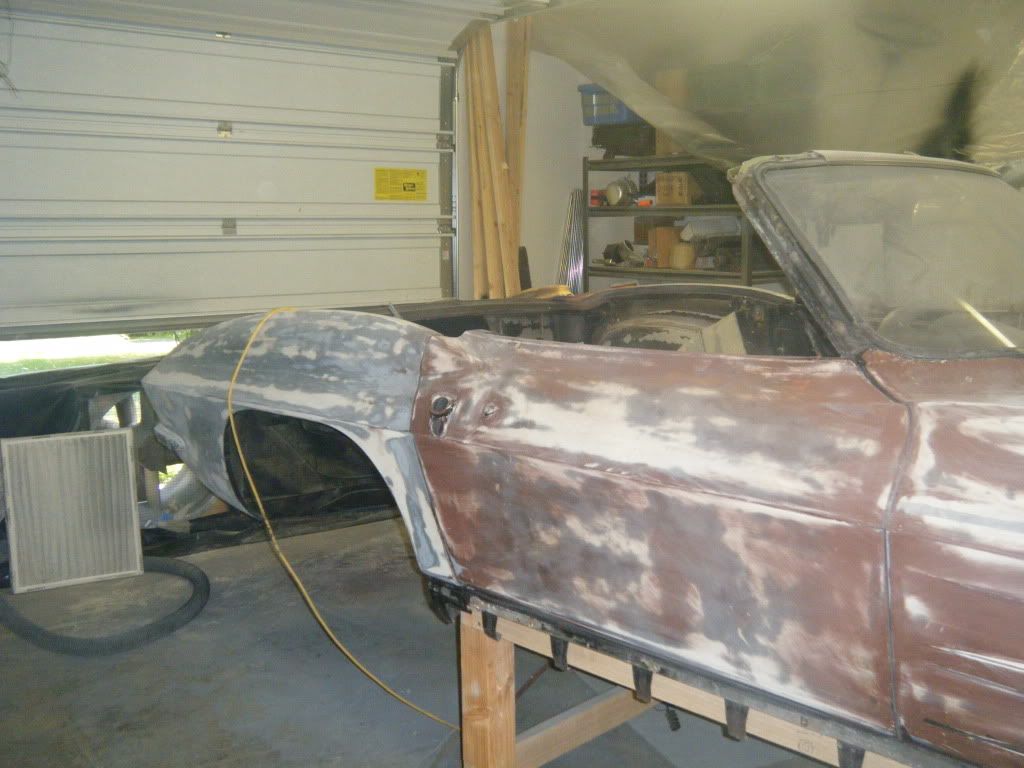J
jaf
I have repaired the structrual damage and replaced the right front panel. I then started sanding the entire care with 80 grit on a 16" board. I found that most of the car had paint and a redish brown primer. Except for the rear quarters which had 2 layers of grey primer under the redish brown layer. My plan was to sand the entire car down with 80 grit. Then go to the short strand fiber fill where needed, top with evercoart body filler, sand w/80, then shoot the car with SPI epoxy. Follow the epoxy with a high build primer like evercoats feather fill. Block again. then shoot with 2K. Block again. Then BC/CC. Does this sound like the right path? Any suggestions are appreciated. Also do I need to sand all the old primer off before epoxy?


